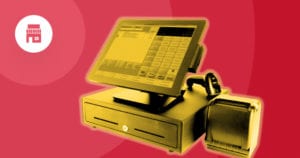
Here’s the truth: the average consumer doesn’t want to think about how IoT-enabled technologies work. If you picture the typical buyer, that individual probably loves the freedom and new experiences brought by the Internet of Things…but that doesn’t mean they really care how we bring to market the technologies behind them.
Fortunately, we don’t need consumers to consciously embrace IoT technologies to advance their use. Instead, we can take the approach of selling users on an experience and use the power of IoT to deliver it.
Everyday buyers are hungry for what we can call “invisible experiences.” They want an experience enabled by IoT technology but without the need to be cognizant to the technology itself. This is very true of conducting payments, for instance. Buyers don’t want to worry about how the technology enables a complex exchange between multiple institutions and accounts, nor are they interested in the ins and outs of payments clearing; they just want it to work.
It’s true that invisible payment experiences are becoming a consumer expectation. This fact will impact retailers who are unprepared to meet customers’ ever-more stringent demands. But, if managed well, it could open the door to some fantastic new opportunities.
Bringing the Invisible Ideal to the Market
Data recently published by Gartner projects that, by 2020, we’ll have 21 billion devices connected to the internet. That’s a mind-boggling 21 percent increase over 2019. The more seamlessly these devices are integrated alongside one another, the better the experience we can offer consumers.
Developing technologies present a lot of divergent opportunities to integrate IoT tools into different experiences. To demonstrate, one of my favorite illustrations of the invisible experience principle at work is Disney’s MagicBand technology.
With this simple wrist device, you have no need to worry about keeping track of park tickets, passes to skip attraction lines, hotel keys, or even your payment card. You can effectively leave your wallet in the hotel room and use the MagicBand to manage all your needs. It’s cardless payment technology, but it’s integrated into a much broader customer experience; you might even say that it works like magic.
Amazon Go is another great example of how we can employ IoT technology to deliver an invisible and seamless customer experience. When the company unveiled their “Just Walk Out” technology to the public back in 2018, the general attitude seemed to be skeptical yet curious. Nearly two years later, the company’s expanded their concept to 17 additional stores in four cities.
In an Amazon Go store, the customer simply grabs what she wants and leaves. There’s no need to checkout; the items are automatically added to an Amazon cart via the mobile app, then charged to the user’s account. It doesn’t get more seamless or invisible than that in terms of payments technology.
IoT Payments: Balancing Security and Consumer Expectations
As with any new technology, we can’t rush into the invisible approach to IoT payments without the right protocols in place. Security is—and should always be—a primary concern.
It’s a challenge to reconcile the need to make payments technologies as invisible as possible, while also delivering security that meets critical standards. As the line between brick-and-mortar and eCommerce grows increasingly blurred, the problems inherent to one channel bleed over into the other. Bringing card-not-present commerce into stores invites many of the same issues we have with eCommerce fraud, which is a rampant problem for online sellers.
One option is to incorporate biometrics on a more integral level. Asking customers to provide a thumbprint or a facial scan to authorize payments does add a small amount of friction to an otherwise invisible process. It’s also true that some customers could be turned off by the idea of providing a biometric reading. Nonetheless, going with a biometric-first approach to authorization offers dual benefits: it acclimates buyers to the new technology while also providing strong authentication with minimal friction.
Just as important as the technology, though, is how we manage consumer expectations. I believe that we can get out ahead of those wants by defining consumers’ expectations ourselves. This means not overpromising on what we can do.
We like the idea of an invisible process, but even then, it’s not truly “frictionless” or invisible. There must still be checks in place to ensure basic security and authentication. While we don’t want to add unnecessary roadblocks between merchants and customers, we also shouldn’t foster an expectation of totally invisible and frictionless commerce.
There’s a balance to strike when it comes to IoT payments. Only with a keen eye for both streamlining the customer experience AND covering one’s bases from a security standpoint, can merchants optimize the experience they offer consumers.





 Related Podcast Episode
Related Podcast Episode




 Related Applications
Related Applications



 Latest IoT News
Latest IoT News









